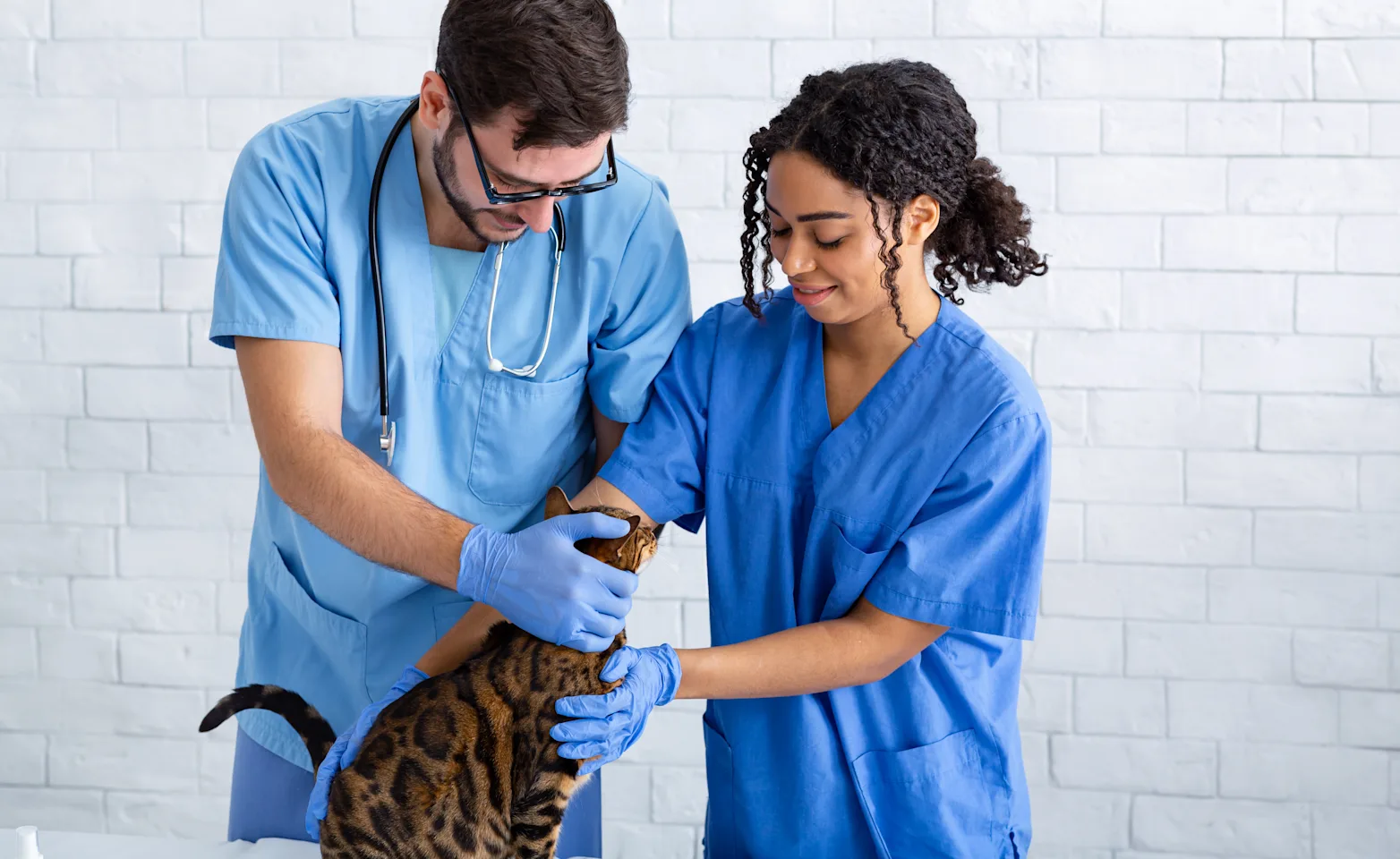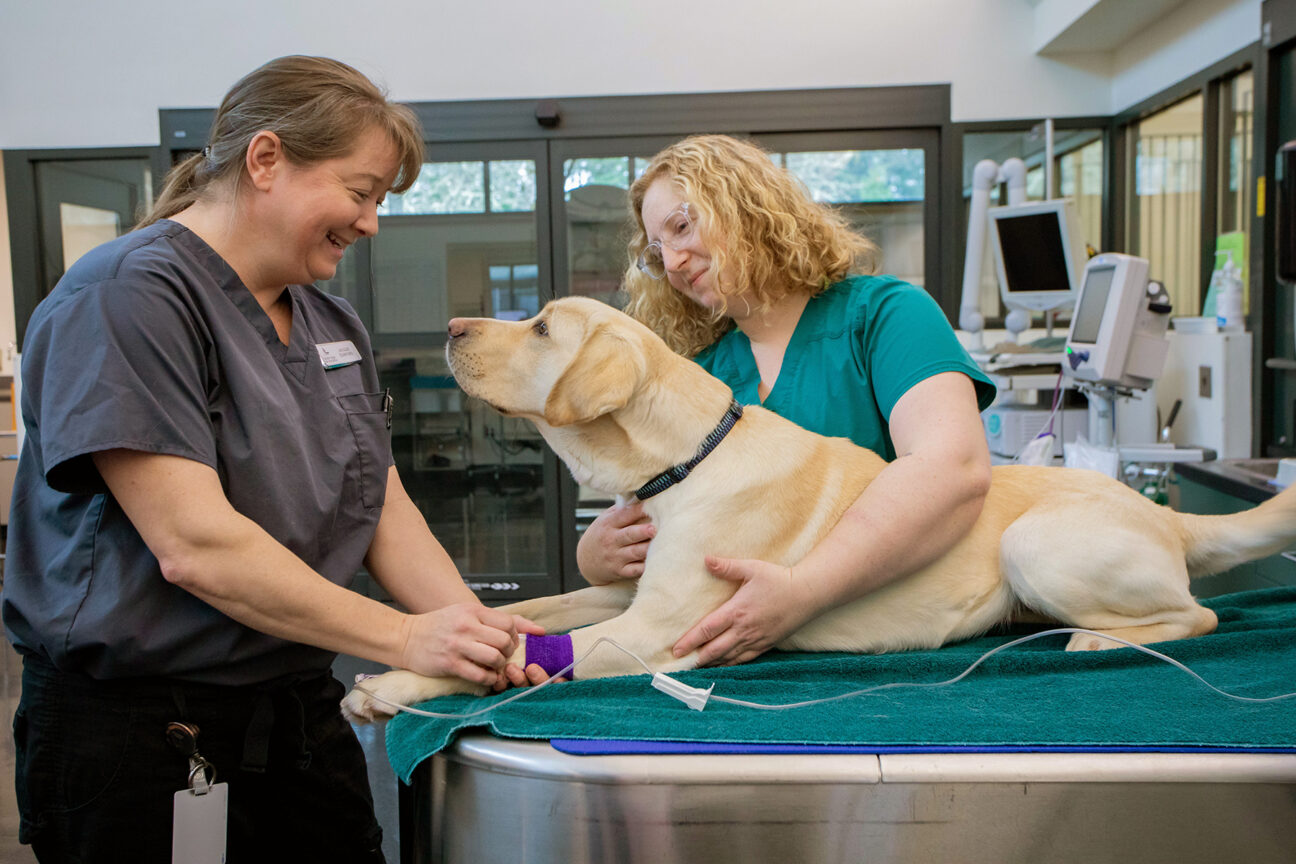Post-Op Recovery Guide After Your Dog’s tplo surgery
Post-Op Recovery Guide After Your Dog’s tplo surgery
Blog Article
Why Animal Rehab Is Essential: the Benefits of Veterinarian Services for Your Pet dog's Healing
Pet recovery is an essential part of healing for animals dealing with injuries or disabilities. Veterinary services offer critical support through customized rehabilitation strategies that address specific needs. These plans often include discomfort monitoring, physical treatment, and nutritional support. Recognizing the different facets of pet rehab can illuminate its value in enhancing recovery outcomes. What specific advantages do these services provide, and just how can they transform a pet dog's healing journey?
Understanding Pet Rehab
Pet rehabilitation includes a variety of restorative techniques focused on recovering the health and functionality of hurt or handicapped animals. This area incorporates different strategies, including physical treatment, hydrotherapy, and work-related therapy, tailored to meet the certain needs of each pet. Recovery experts analyze a pet's problem, establishing customized treatment strategies that may involve exercises to strengthen muscles, enhance mobility, and improve general health. The procedure not only focuses on physical recovery however also addresses emotional and behavioral aspects. Pets frequently experience anxiety and stress and anxiety following an injury, making psychological wellness considerations necessary in rehab. By creating a supportive atmosphere, therapists can help animals restore their self-confidence and adapt to their new circumstances. With routine sessions, animals can experience significant improvements, eventually bring about a far better quality of life. In general, recognizing animal recovery highlights its relevance in promoting recovery and boosting the bond between pets and their proprietors.
The Function of Discomfort Monitoring in Recovery
Just how crucial works discomfort management in the recuperation of hurt pets? It plays a crucial duty in promoting healing and enhancing the overall health of family pets. Proper discomfort administration not just relieves pain yet likewise advertises movement, enabling pets to take part in rehabilitation tasks essential for recuperation. When pain is properly handled, animals often tend to react favorably to therapy, causing quicker recovery outcomes.Veterinarians make use of various techniques to assess and resolve pain, including drugs, acupuncture, and different treatments. By customizing pain monitoring techniques to the specific needs of each animal, vets can assure that pets remain tranquil and cooperative throughout their healing journey. Additionally, lessening pain aids lower stress and anxiety, which can prevent healing and prolong recuperation times. To summarize, efficient discomfort management is crucial for enhancing the recovery procedure and enhancing the lifestyle for injured pets.
Physical Therapy Strategies for Animals
Various physical therapy strategies are readily available to assist in the rehabilitation of pets recovering from injuries or surgical treatments (tplo surgery for dogs). These techniques can enhance flexibility, relieve pain, and promote recovery. Therapeutic exercises, for instance, help strengthen muscular tissues and enhance joint function, allowing animals to regain their physical capacities progressively. Hands-on treatment, that includes massage therapy and mobilization, can minimize tension and enhance flow, contributing to a faster recovery.Other strategies such as easy variety of activity workouts encourage joint flexibility and reduce tightness. In addition, electric excitement therapy may be used to boost nerves and muscular tissues, promoting recovery and discomfort relief.Veterinary specialists typically customize these methods per pet dog's specific needs, making sure a thorough rehabilitation strategy. By applying these physical treatment techniques, animals can experience improved quality of life and a more effective recuperation from their disorders. The assimilation of these techniques into rehabilitation programs is vital for excellent recuperation outcomes
Advantages of Hydrotherapy for Rehab
Hydrotherapy uses substantial advantages in pet recovery, particularly in enhancing mobility. This water-based treatment advertises discomfort alleviation while providing comfort to wounded or recovering family pets. Furthermore, it assists in strength-building workouts that add to overall physical healing.
Improved Flexibility Enhancement
As pets recuperate from injuries or surgical procedures, boosted movement usually becomes a primary objective of their rehab. Hydrotherapy offers as a valuable tool in achieving this purpose. Through water-based workouts, pets can participate in low-impact movements that facilitate joint wheelchair and enhance muscles without the stress and anxiety of weight-bearing activities. The buoyancy of water supports their bodies, enabling enhanced variety of activity and movement enhancement. In addition, hydrotherapy motivates far better equilibrium and coordination, which are important for recovering typical motion patterns. Regular sessions can bring about substantial progress in a pet's physical capacities, inevitably boosting their lifestyle. This approach not just help in recovery however additionally advertises an extra energetic and satisfying way of life post-rehabilitation.
Pain Relief and Comfort

Remedy for discomfort is an essential facet of animal recovery, and hydrotherapy considerably adds to this procedure. By utilizing water's buoyancy, hydrotherapy reduces joint tension and reduces discomfort during motion. This therapeutic strategy supplies a comforting atmosphere where animals can take part in mild exercises without the complete weight of their bodies influencing their recovery. The cozy water stimulates blood circulation, promoting recovery while also urging relaxation. Additionally, hydrotherapy sessions can be tailored to meet the particular needs of the pet, guaranteeing optimal convenience. As pet dogs experience minimized pain and enhanced convenience levels, their overall desire to join recovery activities typically enhances, bring about a more efficient recovery journey. Hydrotherapy serves as an essential tool in enhancing pain relief and convenience during rehabilitation.
Stamina Building Exercises
Strength-building workouts play a vital function in the recovery procedure, with hydrotherapy offering one-of-a-kind advantages. This form of treatment uses water resistance to boost muscle strength without putting excessive stress on the joints. The buoyancy of water supports the family pet's weight, enabling for more secure movement and enhanced variety of motion. In addition, hydrotherapy can boost cardiovascular health and wellness and advertise overall physical fitness, assisting in faster recuperation from injuries or surgical procedures. The controlled environment also minimizes the threat of reinjury, making it a suitable alternative for pet dogs needing recovery. Normal hydrotherapy sessions can cause recognizable enhancements in flexibility, stamina, and endurance, ultimately improving the animal's quality of life and capability to go back to normal activities.
Value of Custom-made Rehabilitation Plans
Personalized rehabilitation strategies are essential for attending to the unique demands of each animal, ensuring individualized treatment techniques. These plans enable for efficient development monitoring and needed changes, cultivating suitable recovery outcomes. Furthermore, an alternative approach can improve the general wellness of the pet, promoting a much more detailed rehabilitation experience.
Individualized Therapy Approaches
While lots of rehabilitation programs embrace a one-size-fits-all method, the one-of-a-kind needs more info of each pet necessitate individualized therapy prepare for ideal recuperation. Personalized rehab plans take into consideration different factors, consisting of the pet's species, age, case history, and specific injuries or problems. By tailoring interventions, vets can attend to each family pet's unique challenges, taking full advantage of the performance of the recovery procedure. Embellished plans may incorporate various modalities such as physical therapy, hydrotherapy, and restorative workouts, ensuring that the treatment straightens with the pet's capacities and development. In addition, individualized strategies promote a more powerful bond between the pet dog and the caregiver, promoting an extra interesting and helpful recuperation environment. Eventually, personalized therapy is necessary for accomplishing finest possible outcomes in pet rehabilitation.
Progression Tracking and Adjustments

Holistic Recuperation Techniques
Holistic recovery techniques are important for reliable animal rehab, as they highlight the significance of customized therapy strategies tailored per animal's details requirements. This method considers the physical, psychological, and environmental aspects impacting recuperation. Customized rehab plans might include a mix of physical therapy, nutritional counseling, and behavior adjustments. By attending to these diverse aspects, vets can enhance the general well-being of the pet and advertise a faster recovery. Such tailored methods facilitate a deeper understanding of the family pet's one-of-a-kind challenges, leading to extra reliable treatments. Eventually, alternative recuperation methods not just improve physical health and wellness but also add to the pet's psychological and psychological security, guaranteeing a comprehensive rehab experience.
The Effect of Nourishment on Recovery
Nutrition plays a vital function in the recuperation procedure for refurbishing animals, usually determining the speed and effectiveness of healing. A well-balanced diet offers the required nutrients that sustain cells repair, boost the immune system, and boost total vitality. Protein is specifically essential, as it assists in muscle rebuilding and recovery from injuries. Essential fats, vitamins, and minerals additionally contribute to reducing swelling and promoting ideal mobile function.Veterinarians often emphasize the importance of customized nourishment plans, taking into consideration each animal's certain demands, age, and health standing. Proper hydration is equally important, as liquids facilitate nutrition absorption and help in cleansing. By making certain that pet dogs get ideal nourishment, caretakers can greatly enhance their possibilities of an effective recuperation, resulting in much better long-lasting wellness results. Inevitably, nutrition acts as a fundamental element in the recovery trip, sustaining pets in restoring strength and strength post-injury or illness.
Success Stories: Pets That Thrived After Recovery
Successful rehab stories are plentiful, showcasing the resilience of pet dogs who have actually gotten over substantial difficulties. Take, for instance, Bella, a gold retriever that endured severe injuries from a car crash. With committed veterinary treatment and a thorough rehab program, she reclaimed her movement and went back to her spirited self, much to her owner's joy. Likewise, Max, an elderly pet cat diagnosed with arthritis, experienced impressive improvement via a combination of physical therapy and discomfort monitoring. His newly found agility enabled him to enjoy his preferred sunbathing areas again. One more motivating situation is that of Coco, a saved greyhound that got rid of anxiety with therapy and socialization strategies, allowing her to grow in her brand-new home. These success stories exhibit the transformative power of animal rehabilitation, emphasizing that with the best assistance, pets can not just recoup however lead satisfying lives, enhancing the bonds they show their families.
Regularly Asked Questions
For how long Does the Recovery Process Generally Take for Animals?
The rehabilitation procedure for pet dogs generally varies based upon the injury or condition, ranging from a few weeks to a number of months. Private development, therapy kind, and commitment to workouts considerably affect the overall period of recuperation.
Are There Any Type Of Risks Related To Pet Recovery?
Pet rehab may carry risks such as exacerbation of injuries, improper methods bring about pain, or inadequate tracking throughout recovery. These variables can prevent development and impact the general performance of the rehabilitation process.

Can All Pets Take Advantage Of Recovery Providers?
Not all animals might need recovery, but numerous can benefit greatly. Recovery services can boost wheelchair, reduce discomfort, and enhance total well-being, particularly for those recouping from injuries, surgeries, or chronic problems.
How Can I Prepare My Pet Dog for Rehab Procedure?

What Indications Indicate My Family Pet Needs Rehab?
Indicators indicating a family pet might need recovery consist of problem walking, limping, lowered task levels, hesitation to leap, or signs of discomfort. Observing these actions can trigger proprietors to look for specialist evaluation and treatment for their animals.
Report this page